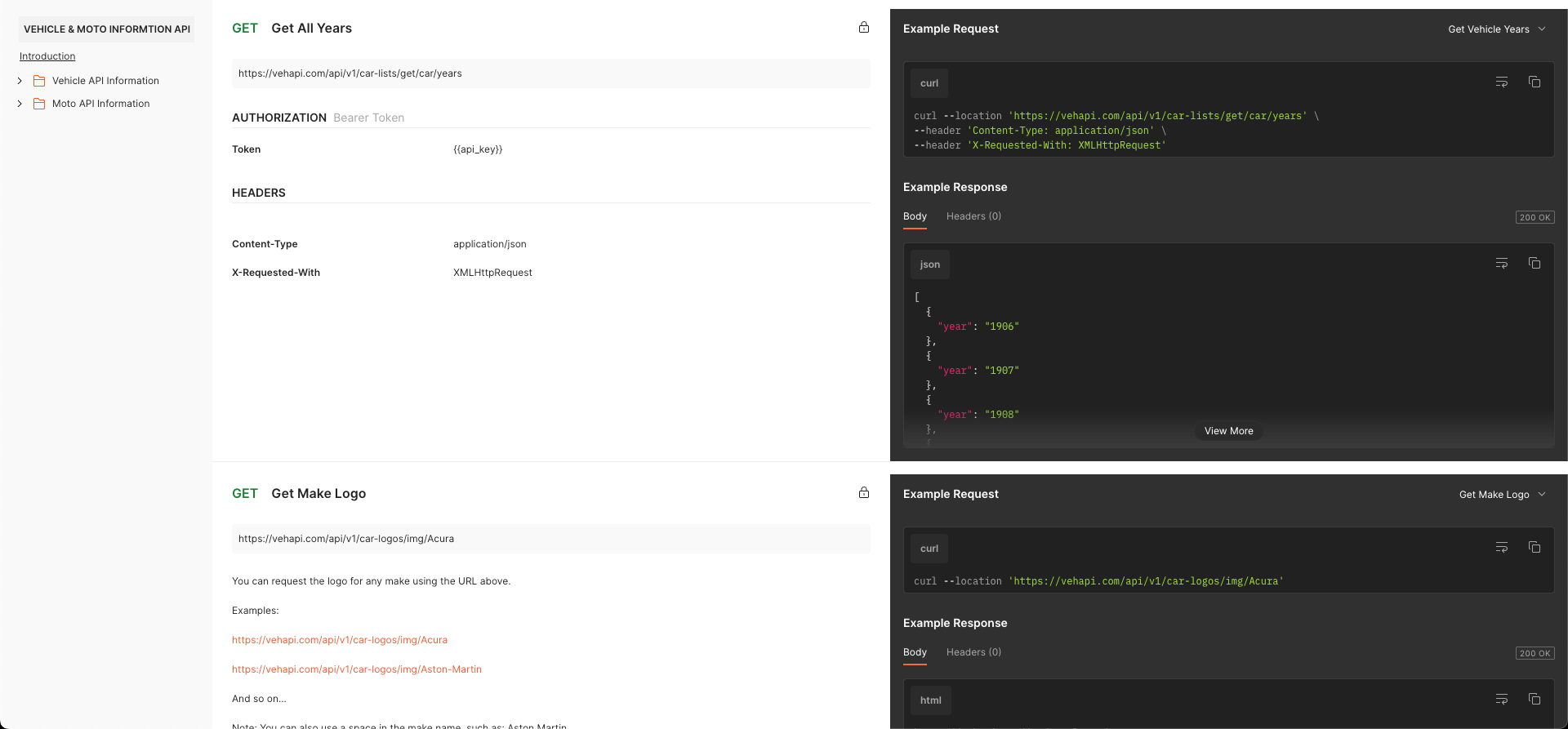Case Study: Vehicle Information API
Tech Stack: Laravel, PHP, MySQL, HTML, Bootstrap CSS & Javascript
Introduction
In a world where access to accurate and comprehensive vehicle information is crucial for a myriad of applications—from automotive marketplaces to insurance quote generators—a leading technology company identified a gap in the market for a reliable Vehicle Information API. This case study examines the development process, challenges, and successes of building an advanced Vehicle Information API. The project leveraged a robust stack, including Laravel, PHP, MySQL, HTML, Bootstrap CSS, JavaScript, and, notably, Livewire, to deliver detailed vehicle data tailored for developers and businesses.



The aim was to create a Vehicle Information API that could offer extensive details about vehicles, such as year, make, model, trim, transmission, and engine types. The project was designed to serve developers and businesses requiring precise vehicle data for their applications, ensuring ease of integration and reliability.
- Laravel & PHP: Laravel provided the backend framework, facilitating a structured and scalable API development, while PHP was used for server-side scripting.
- MySQL: Chosen for its robustness and reliability, MySQL was used to store and manage the extensive vehicle data.
- HTML & Bootstrap CSS: These technologies were utilized to craft the API documentation and user interface, ensuring it was accessible and user-friendly.
- JavaScript: JavaScript added interactive elements to the web pages, whereas Livewire allowed for the creation of a dynamic, real-time user interface without leaving the Laravel ecosystem.
Development Process
Challenges and Solutions
- Real-time Data Interaction: Providing users with the ability to interact with vehicle data in real-time posed a challenge. Livewire addressed this by enabling dynamic updates and interactions within the Laravel framework, improving the user experience significantly.
- Data Accuracy and Completeness: Ensuring the database contained up-to-date and comprehensive vehicle information required continuous updates. The team implemented a regular data update process, sourcing information from reliable automotive data providers.
- Scalability: Anticipating high demand, the system's scalability was a concern. The use of Laravel's queue system and optimizing database queries ensured that the API could handle a growing number of requests efficiently.
Results and Impact
- Easy Integration: The API's comprehensive documentation and user-friendly interface facilitated seamless integration into various applications.
- Accurate Vehicle Data: Access to detailed and accurate vehicle information enabled businesses to enhance their services, from vehicle valuation to insurance quote generation.
- Improved User Engagement: The dynamic user interface, powered by Livewire, provided an enhanced user experience, encouraging more interactions with the API dashboard.